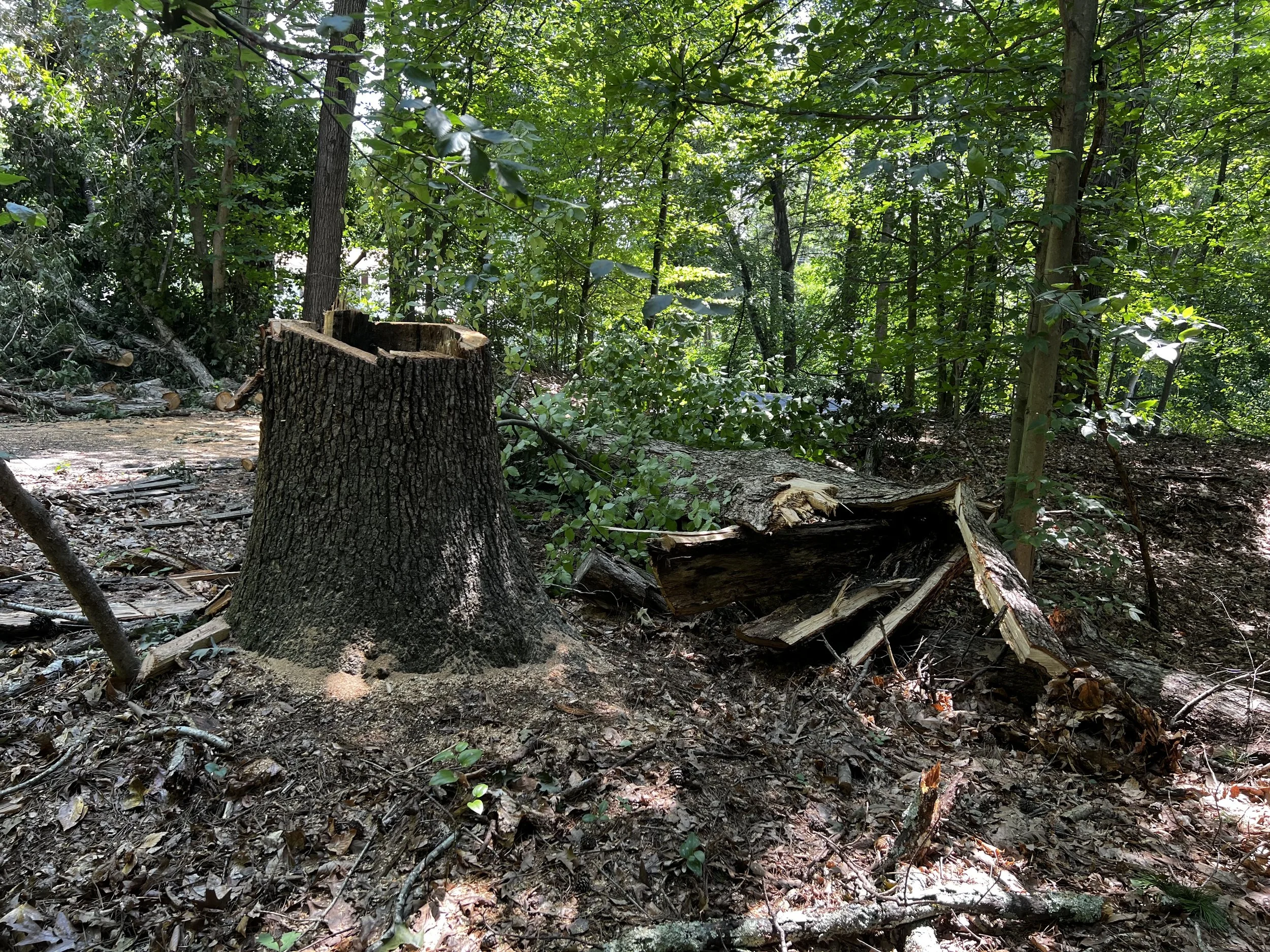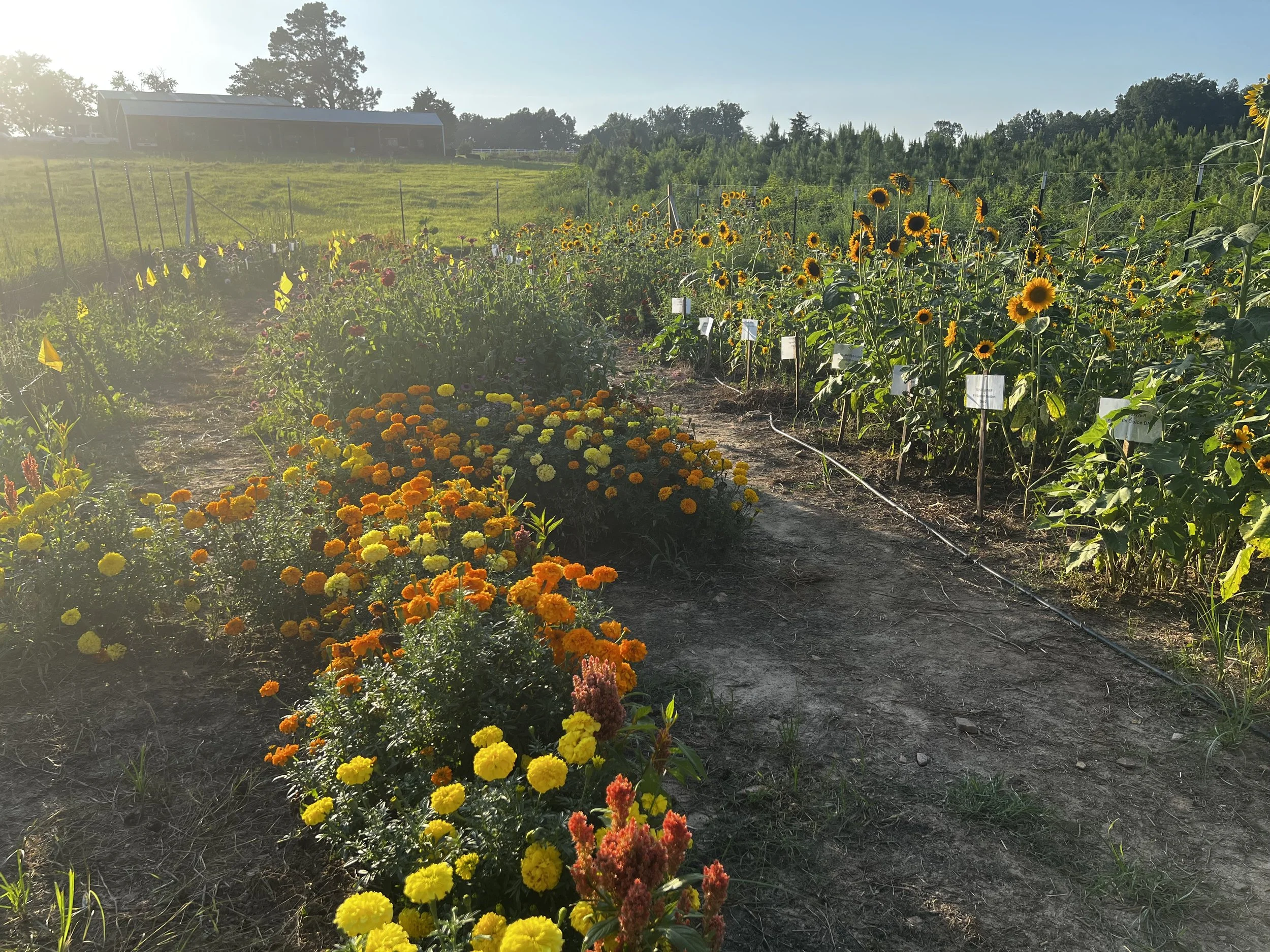Creating Sacred Spaces For Your Feathered Friends
How to Properly Care for Hummingbird and Bird Feeders (And Why It’s So Important)
Bird feeders are a beautiful way to invite nature into your yard. Whether you love watching magical hummingbirds hover over nectar or seeing cheerful songbirds gather around a seed feeder, these small gestures help support our feathered friends—especially during times of food scarcity. But keeping feeders clean and well-maintained is more than just good etiquette. It's essential for the health and safety of the birds we love.
For anyone who doesn’t know me: I LOVE hummingbirds. I am a nature lover in general (surprise?) but don’t even get me started on those magical little fairy birds. The joy that they bring me when they return every April is incomparable. I even have a hummingbird tattoo. It’s a deep love and admiration for those happy little energy sprites.
Image from Unsplash
I watch them enough to recognize them and know that we have 7 “regulars” who also know me and will come right up to me when I’m outside. Also, I may or may not have named them (I have). So when I saw one of our regular hummers in distress at one of our feeders one day, I immediately removed them.
Heartbreakingly, that little one didn’t survive. I was devastated. I haven’t put the feeders back since - it was a traumatic experience and one that I don’t want to repeat if I can help it. Mind you, I don’t know if it picked up this illness at one of our feeders or at one nearby, but I will do everything in my power to prevent a problem. This was the inspriation for sharing this information this month, so that more hummingbirds and other birds can stay healthy and well fed.
Why Clean Feeders Matter
Dirty feeders can become dangerous breeding grounds for mold, bacteria, and disease. Left unchecked, spoiled nectar or moldy seed can make birds sick—and even kill them. Hummingbirds are especially vulnerable because of their tiny size and high metabolism, and they rely on clean, safe nectar to stay healthy.
Regular maintenance helps:
Prevent the spread of diseases
Stop harmful mold and fermentation
Avoid attracting unwanted pests like ants, bees, or raccoons
Ensure that birds continue to visit your yard with confidence
Let’s break down how to care for each type of feeder and sign of illness to look out for in hummingbirds.
How to Care for Hummingbird Feeders
Image from Unsplash
1. Clean Often:
In hot weather, clean hummingbird feeders every day. In cooler weather, every 3-4 days may be enough. If you see cloudy nectar, mold, or black spots, clean it immediately—those are signs of contamination, which can be deadly to those sweet hummingbirds.
2. Use Hot Water and a Bottle Brush:
Disassemble the feeder and scrub all parts with hot water. Avoid using soap, which can leave harmful residue. A solution of 1 part white vinegar to 4 parts water also works well for deep cleaning. Rinse thoroughly.
3. Avoid Red Dye in Nectar:
Homemade nectar is best: 1 part white sugar to 4 parts water. Boil the mixture, let it cool, and store extras in the fridge. Red dye is unnecessary and can be harmful.
4. Place Feeders Wisely:
Keep them in shaded areas to slow spoilage and make feeding more comfortable for hummingbirds.
Signs of Illness in Hummingbirds from Contaminated Feeders
While hummingbirds may not show obvious symptoms right away, there are subtle signs that could indicate they've been exposed to contaminated nectar or an unclean feeder:
Lethargy or Weakness – A sick hummingbird may perch for long periods, move sluggishly, or seem unusually still.
Difficulty Flying – Watch for birds that appear uncoordinated or struggle to hover or fly in a straight line.
Fluffed Feathers in Warm Weather – Birds often fluff up to stay warm when they're ill, even if the temperature doesn't call for it.
Bobbing their head up and down – A hummingbird that approaches the feeder but doesn't drink but instead makes a bobbing motion with their head tilted back may be in distress.
Please do not handle wild animals, especially ones that you suspect may be ill. Call your local wildlife rescue center (Here is a link to ones in the state of Virginia or you can search “wildlife rescue center (insert your location here)”) for advice on how to proceed safely with wild animals.
How to Care for Bird Seed Feeders
Image from Unsplash
1. Clean Weekly (or More Often During Wet Weather):
Seed can become damp and moldy quickly, especially in humid or rainy conditions. Once a week, empty the feeder, discard any old or clumped seed, and scrub the feeder with hot, soapy water or a diluted bleach solution (1 part bleach to 9 parts water). Rinse thoroughly and allow it to dry completely.
2. Use Fresh Seed:
Buy seed in small quantities so it doesn’t sit around and get stale or attract insects. Store it in a dry, cool place in a sealed container.
3. Rotate Feeder Locations:
This helps prevent accumulation of droppings and seed hulls in one area, which can lead to disease spread or rodent problems.
4. Keep the Ground Clean:
Sweep or rake up spilled seed and droppings regularly, especially under platform or tube feeders.
Final Thoughts
Taking a few extra minutes to clean and care for your bird feeders is one of the kindest things you can do for wild birds. Humans are removing natural food sources every day, so we owe it to them to provide safe, plentiful food if we are able to do so. When we put out food for them, we take on a small responsibility to ensure it’s safe and healthy.
And if you feel overwhelmed with the proper upkeep of the feeders, it’s best not to offer them at all. How would you feel if the cook at your favorite restaurant was getting overwhelmed during the lunch rush and decided, “Meh, this plate isn’t *too* dirty, let me just put more food on it and send it out, I bet they won’t even notice.” NOT ACCEPTABLE for humans… or our feathered friends.
Think of it as a partnership—one that brings joy, color, and life to your outdoor space while offering birds a reliable, trustworthy source of nourishment. Not to mention how much natural pest control birds can offer in your garden! Read more about that here.
And, I cannot stress this enough: Please do not handle wild animals, especially ones that you suspect may be ill. Call your local wildlife rescue center (Here is a link to ones in the state of Virginia or you can search “wildlife rescue center (insert your location here)”) for advice on how to proceed safely with wild animals who need help.
Happy birdwatching!
BONUS tip: Have multiple feeders on hand, filled with homemade nectar (4 parts water:1 part white sugar) and stored in the refrigerator. They will keep for up to 1.5 weeks.
Example: I have 6 feeders and keep 3 filled and in the fridge. When I go to change out the feeders (I put 3 out at a time), the pre-filled ones get switched out which gives me time to properly sanitize and take care of the other feeders. And the cool water I feel doesn’t go bad as quickly in this summer heat, though they’re still changed daily. I wonder if the hummingbirds like a cool drink as well? They don’t seem to mind the cool nectar, but they do seem happy that they don’t have to wait for me to refill!
July Farm Updates
July felt fast and slow at the same time. I don’t know how to explain it. Can anyone else relate?
Between the heat and the rain and the more rain, it felt like it was never ending, yet it also feels like “Wow, it’s already August?!”
Here at the farm, we’re in between blooms for a lot of our offerings. Mainly because of the spring rains and losing about 400 plants back in May. A two-month setback means I don’t have as many blooms right now as I was planning on… just Growing with the Flow over here!
And the weeds and pests are in their prime right now. Oh my are they! I know that cooler weather is on the way, which will slow their flow, so I’m trying not to stress about it. I like to think they’re helping keep the soil moist and loose… but the rain is also here for that…
Like most of the area, we’ve had all-or-nothing rains this month. It’s either dry and sunny, or we’re getting upwards of 2-3 inches of rain per HOUR. That’s nuts!
We experienced a huge storm toward the end of the month that took down quite a few trees (as well as our power for a few hours). We must have experienced a down draft because while I was watching the storm, all of the sudden my entire garden just laid FLAT. Omph. Everything was ok, no broken stems or anything, but they all looked like they’d coordinated a flash mob (remember that fad?) and all fell to the ground in unison, along with a few trees.
One of the trees that we lost and what’s left of it’s stump.
This one dropped a huge limb a few years ago and is completely hollow (as you can see by the stump and remnants). I’m so glad this wasn’t near anything! Just blocked our driveway for a couple days.
Thankfully, I use support netting on my flowers and simply stood them all back up and then helped out the corn stalks in the veg garden by propping them upright. All is well again! Grow on, y’all!
And we were fortunate enough to get two pumpkins from the trellis tunnel pumpkins before the squash bugs destroyed the vines. Though, Bonny wasn’t too sure about them while they were still up there…
I had the opportunity to attend VSU’s Cut Flower Field Day at the end of the month. It was indeed a field day! And hot! We started out at Archlynn Farms, where they grow flowers and LOTS of fruits and veggies. Good thing farmers are used to the heat, but wow did it feel good to sit in a (not so hot) barn to eat dinner at South Forty Farm.
The ASCFG Cut Flower Trial garden at South Forty Farm
I was happy to see some familiar faces from the Cut Flower Discussion Group and meet some more fellow farmers and florists. I also got to geek out over soil structure, learn more about hydroponics, and chat with the regional ASCFG director who was kind enough to drive down from Pennsylvania to join us.
Kim Hill, owner of Crane and Clover Retreat, gave a wonderful presentation on what she is doing on her property. Lots to think about while I’m getting the rentable space ready here at Giardino Foresta! I’ve been speaking with a lot of other farm owners about what it means to open their property to the public, along with some potential teachers for meditation and yoga sessions. Stay tuned for more and be sure to sign up for the email list if you haven’t already! Email subscribers will be the first to have access to event sign ups once they open.
On to August!





